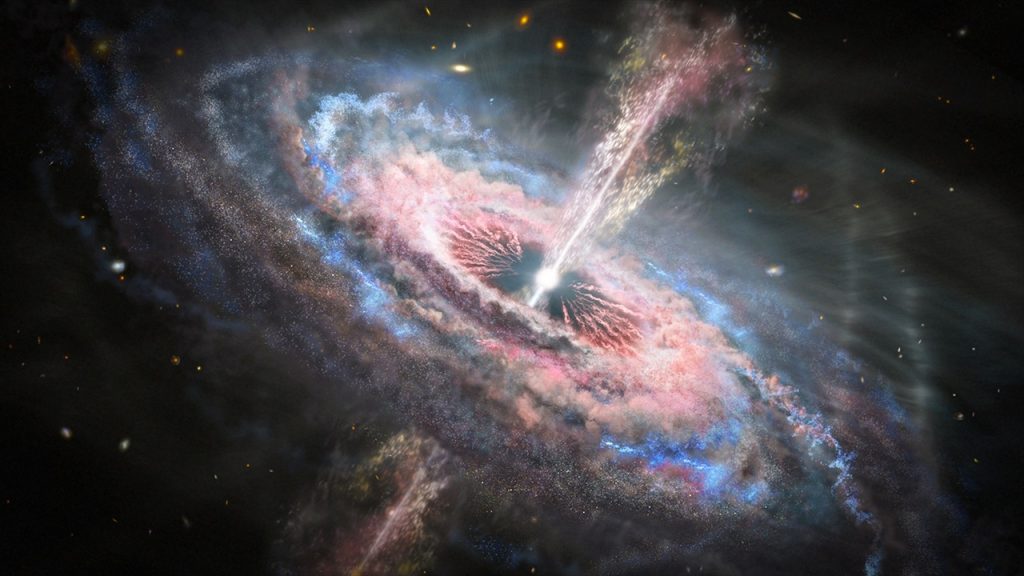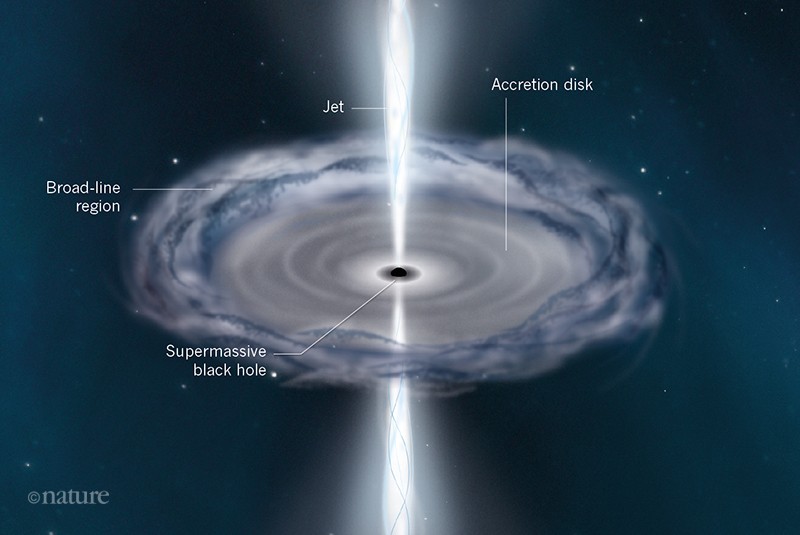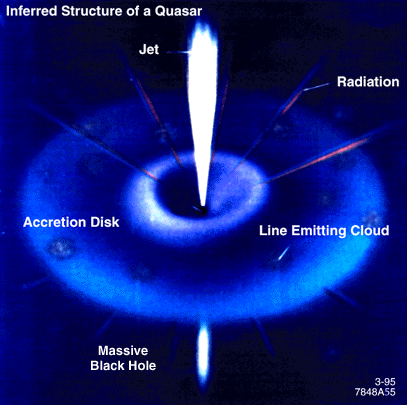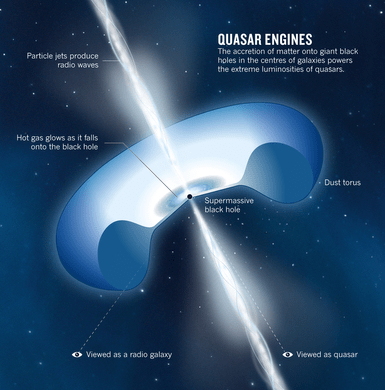
A supermassive black hole with a mass of millions to billions of times the mass of the Sun. When the gas in the accretion disk reaches the black hole, energy is emitted in the form of electromagnetic radiation, which can be observed across the electromagnetic spectrum. The energy emitted by quasars is enormous: the strongest quasars are thousands of times brighter than a Milky Way galaxy.

The term quasar originated from the abbreviation of quasi-stellar [star-like] radio source, as quasars were first identified in the 1950s as sources of radio-wave emission of unknown physical origin, and identifiable with photographic images of the same wavelength. Dots of light like dim stars.

High-resolution images of quasars, especially from the Hubble Space Telescope, have shown that quasars occur at the centers of galaxies and that some clusters of galaxies collide strongly with each other. Like the other parts of the AGN, the observed properties of quasar depend on a number of factors, including the mass of the black hole, the rate of gas accumulation, the orientation of the accretion disk relative to the observer, and the presence or absence of a jet.

In addition, quasars are found at very wide distances due to the amount of opacity caused by gas and dust within the galaxy, and quasar detection surveys have shown that quasar activity was more common in the distant past.

The peak period of quasar activity was about 10 billion years ago. As of 2017, the most distant quasaris known at redshift z = 7.54 is ULAS J1342 + 0928; The light observed from this quasar was emitted when the universe was only 690 million years old. The supermassive black hole in this quasar, with a mass of 800 million solar masses. It is the farthest black hole ever known ..!





Recent Comments